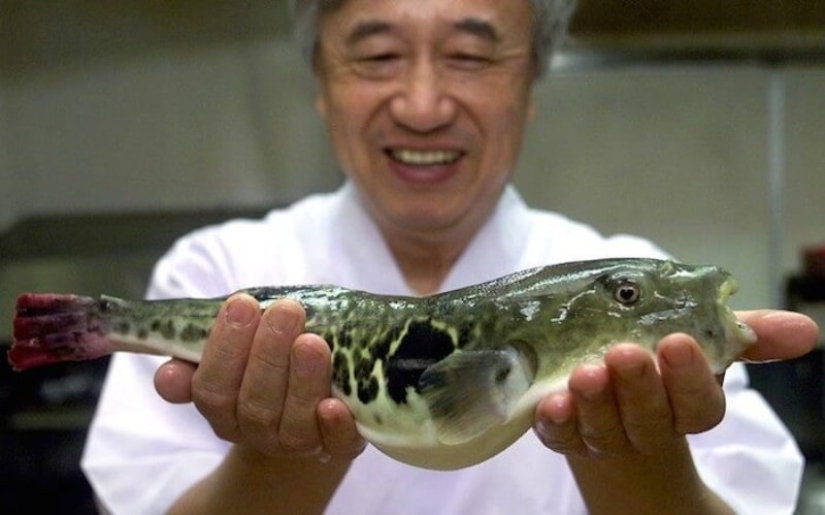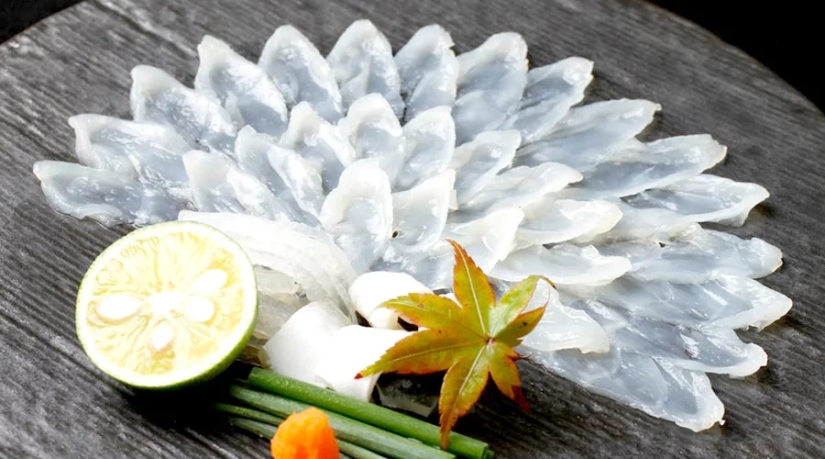Why do gourmets value the deadly puffer fish and what risks do they take?
Categories: Animals | Asia | Food and Drinks
By Pictolic https://pictolic.com/article/why-do-gourmets-value-the-deadly-puffer-fish-and-what-risks-do-they-take.htmlA Japanese proverb says: “If you want to eat fugu, write a will.” Fugu fish, or as it is also called dog fish, is one of the most expensive delicacies of Japanese cuisine and the only deadly dish. This is a real legend, which thousands of connoisseurs of exotic cuisine from around the world dream about with lust, trepidation and horror. Let's figure out what attracts gourmets to fugu and what the consequences of eating this fish are.

In fact, fugu is not a specific fish, but a whole series of marine inhabitants of the pufferfish family of the genus Takifugu. In Japan they say: “He who eats fugu is a fool, but so is he who doesn’t eat it.” But not everyone can taste this dish. Fresh fish is sold at prices starting from $300 (27.2 thousand rubles). A set lunch, which includes fugu fillet, will cost at least $1,000 (90.7 thousand rubles).

Fugu is served like sashimi, thinly sliced into slices. Most often, the chef skillfully folds pieces of fillet into a delicate white flower. It comes with podzu hot sauce. They use different types of puffer fish, but the most common one is the tiger pufferfish, which is the most poisonous. It has been established that the dish appeared about 4 thousand years ago, but it is not known exactly who first thought of cooking it.
Fugu fish meat itself is completely safe. But the deadly tetrodotoxin (TTX) is found in other parts of the body: liver, intestines, ovaries, eyes, blood. This poison is considered one of the most powerful in nature. It is 1200 times more toxic than cyanide. To definitely kill a person you only need 2 mg. One fish that fits comfortably in the palm of your hand is enough to take the lives of 30-40 people.
The poison TTX is a neurotoxin. It blocks the transmission of signals from nerves to muscles, causing paralysis of all muscles. Breathing stops, the heart stops working, and then death occurs. The toxin works in different ways. The first symptoms of poisoning can appear either after 10 minutes or after 6 hours. First there is numbness and slight tingling of the tongue, lips and face. Then comes muscle paralysis and problems with swallowing, walking, speaking and breathing.

Puffer fish poisoning is not always a guaranteed death. Properly prepared pufferfish fillets are valued precisely because of the mild effect of the toxin that many feel. Most often, the matter does not go further than numbness of the tongue and lips. The unusual sensation caused by tiny doses of poison in muscle tissue goes away completely within a day.
Sometimes you have to consult a doctor. In this case, doctors can only support the patient’s body and hope that the dose of TTX was less than lethal. Unfortunately, there is no antidote, nor are there reliable ways to save those who have unsuccessfully enjoyed the deadly delicacy.

If the cook made a mistake and cut the fish incorrectly, everything ends in disaster. Relentless statistics show that in Japan about 50 people suffer from fugu poisoning every year. This is exactly how official sources formulate it, because death statistics are not publicly available. Usually they limit themselves to the vague phrase “several people died.”
Those who have dared to try fugu fish note its delicate and light taste. The feeling of numbness of the mucous membranes, expected by many, may not occur. The preparation of fugu fish in Japan is strictly regulated. To obtain the right to cook a dangerous dish, a cook must undergo special training and receive a certificate. The restaurant must also be licensed.

There were periods in the history of the Land of the Rising Sun when eating fugu was prohibited by law. The last ban lasted for several centuries, from 1570 to 1870. Ancient sources say that the measure was forced, since the number of deaths from poisoning was frightening.
In many countries around the world, any Tetraodontidae pufferfish are prohibited from being eaten. Even their extraction and sale is illegal in the European Union. That's why every year thousands of culinary thrill-seekers travel to Japan, where dogfish are caught, sold and cooked.
Did you know that in nature there are not only poisonous fish, reptiles and arthropods, but also birds? The pitaha bird of New Guinea can cause suffering and death even with one touch.
Recent articles

Twitter user @FactBuffet collects interesting facts about everything. Today we bring to your attention another series of facts that ...

Aomori Prefecture in the north of the Japanese island of Honshu is an agricultural region famous for its delicious apples. In ...

Imagine a baby vampire or a tiny zombie with glass eyes ... An artist from the USA Bean Shanine specializes in creating such ...